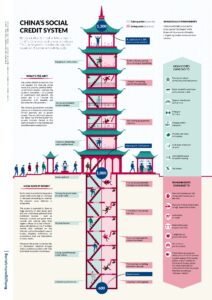Films have a huge impact on the human mind. Films can communicate, embody and articulate the effectiveness of behaviours of leadership.
Hollywood has a variety of award-winning films that portray the heroism and sacrifices of different military leaders in battlefield.
Black Hawk Down
Film. Black Hawk Down released in 2001 based on a true fact from Somalia. This film was produced and directed by Ridley Scott from a screenplay by Ken Nolan. This movie was based on the 1999 non-fiction book Black Hawk Down by journalist Mark Bowden.
Film Setting. In 1993, the US military operated a raid in Mogadishu to capture faction leader Mohamed Farrah Aidid. The ensuing firefight was known as the Battle of Mogadishu. In January 1991, Somalian President Mohammed Siad Barre was overthrown by a coalition of opposing clans, precipitating the Somali Civil War. In this civil war, around three hundred thousand (300,000) people were killed. Therefore, this civil war turned to genocide and the united nation had to intervene for the peacekeeping.
Film Plot. In 1992, U.S. forces had arrived in Somalia on a humanitarian mission to provide the food access to starving people in a city where different militia groups controlled basic resources. Initially, Task Force Ranger and U.S. Joint Special Operations force was a collaborated with other elite forces units from Army Special Operations Command, Air Force Special Operations Command, and Navy Special Warfare Command. Fifth Ranger Regiment and Delta Force was sharing the major members of this operation. Members from the seventh Task Force Ranger was dispatched to seize two of Aidid’s high-echelon lieutenants during a meeting in the city. The goal of the operation was achieved, though conditions spiraled into the deadly Battle of Mogadishu. The initial operation on October 3, 1993, intended to last an hour, became an overnight standoff and rescue operation extending into the daylight hours of October 4th. In this operation, 19 US soldiers sacrificed their lives and more than 1000 Somalian militia and civilian were killed.
Leadership Qualities
Black Hawk Down movie, is one of the best examples of leadership during crisis. It also brings out elements of situational leadership and ethical leadership. In the movie Major General William Garrison is portrayed as an authoritative but caring leader. Overall it is a story of many heroes. The major leadership lessons from this movie as follows:
- Lead by example and be willing to carry the burden of leadership.
- Be reliable and dependable, a leader that can be counted on.
- It is critical for leaders to understand Maslow’s Hierarchy of needs
Recommendation
This film is recommended to be watched by the young military leaders.
Titbits
Black Hawk Down won two Academy Awards for Best Film Editing and Best Sound Mixing at the 74th Academy Awards (wikipedia.org, oscars.org). This movie has a strong foundation of political dilemma and social justice issue.
Value Additions are most welcome
For regular updates, please register here
References
Harvard Business School. (2003, April 21). “Black Hawk Down”: Leading in Crisis. Retrieved on September 10, 2018 from https://hbswk.hbs.edu/archive/black-hawk-down-leading-in- crisis.
Kirkpatrick, T. (2017, May 18). 8 awesome enlisted leaders depicted in war movies. https://www.wearethemighty.com/articles/8-awesome- enlisted-leaders-depicted-in-war-movies.
Guthrie, K. L., & Jenkins, D. M. (2018). The role of leadership educators: Transforming learning. Charlotte, NC: Information Age Publishing.
Rajendran, D., & Andrew, M. (2014). Using film to elucidate leadership effectiveness models: Reflection on authentic learning experiences. Journal of University Teaching & Learning Practice, 11(1), 8.

